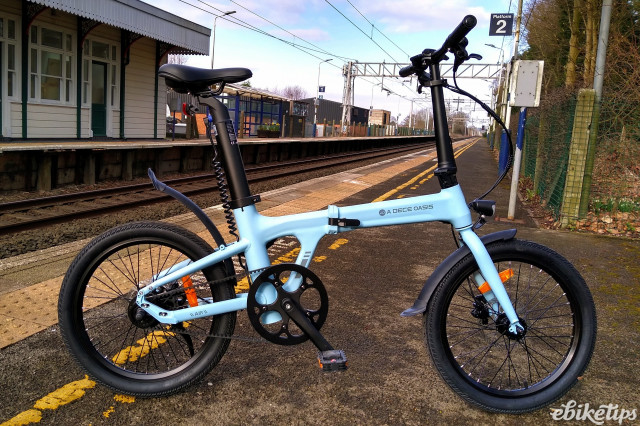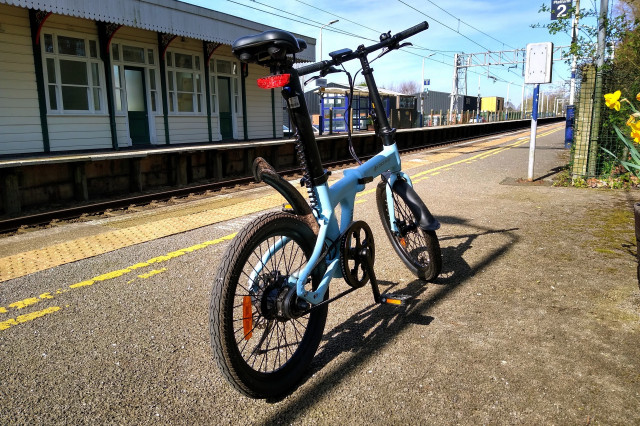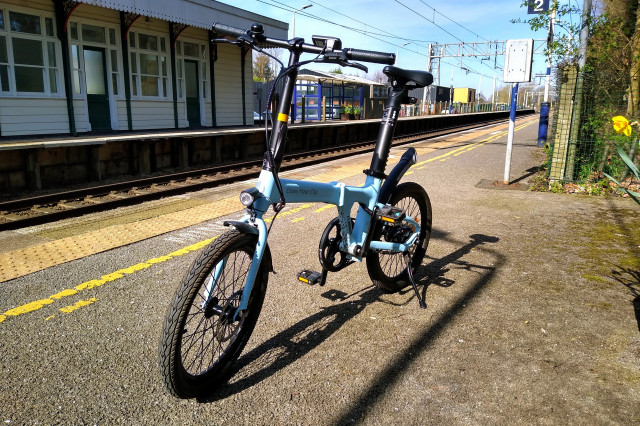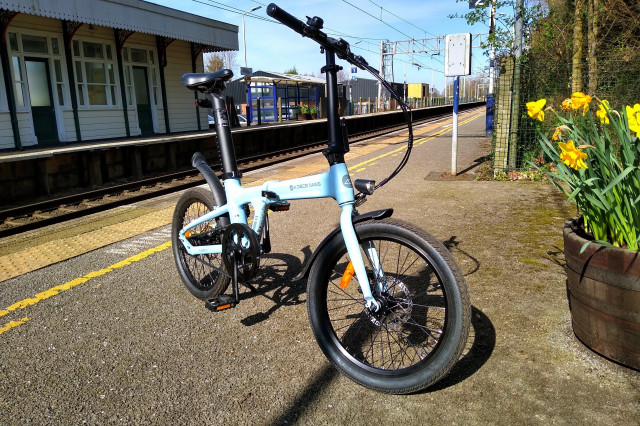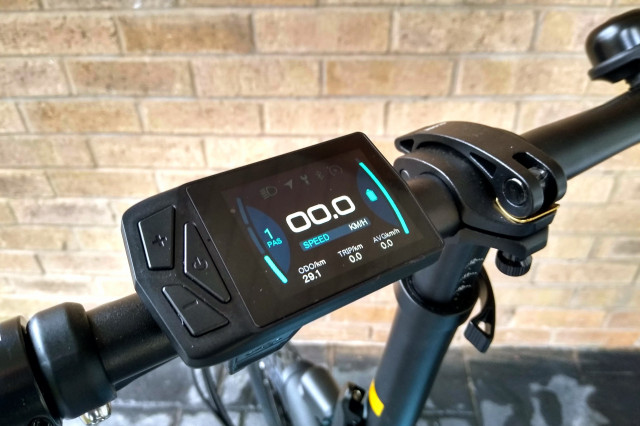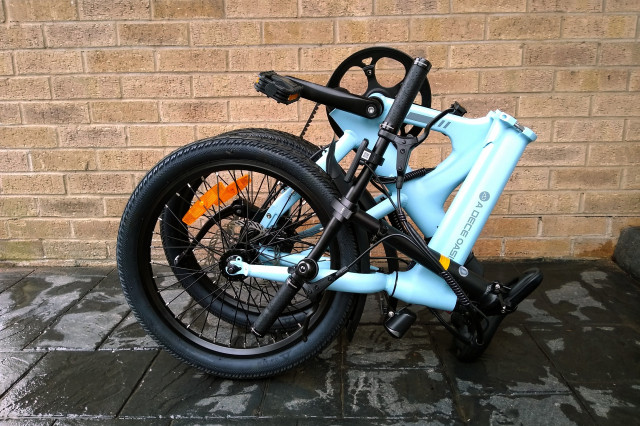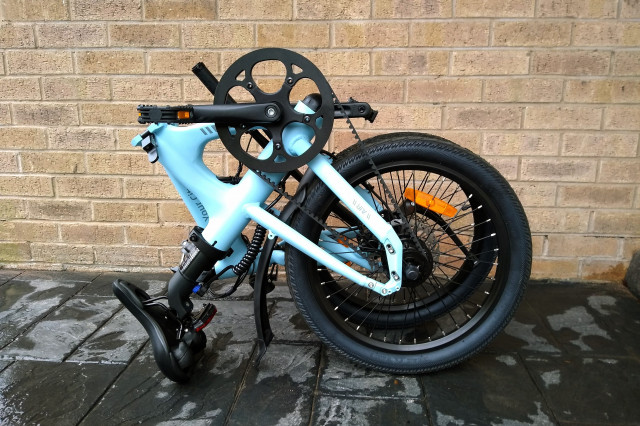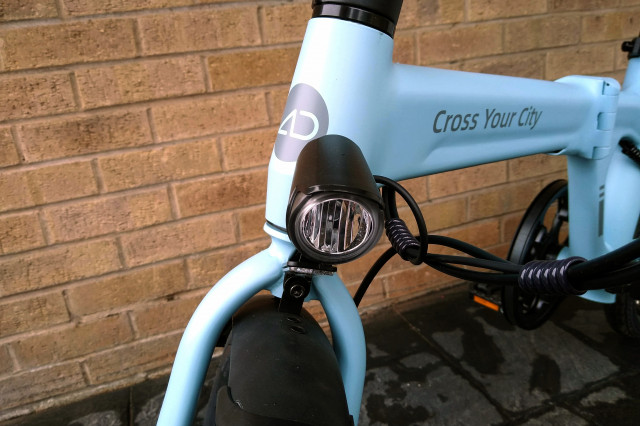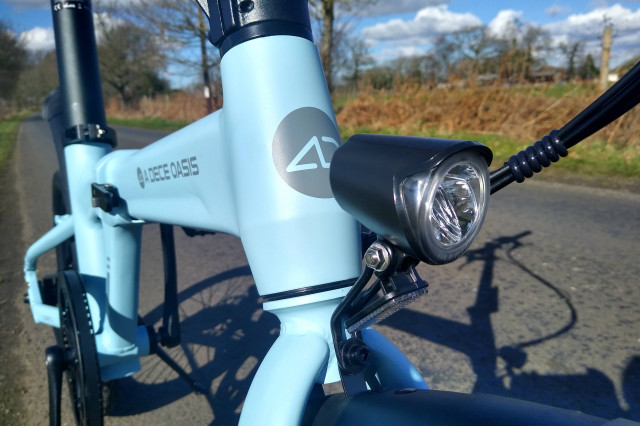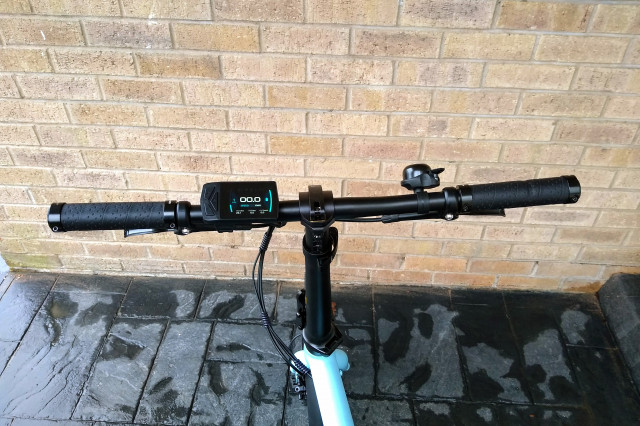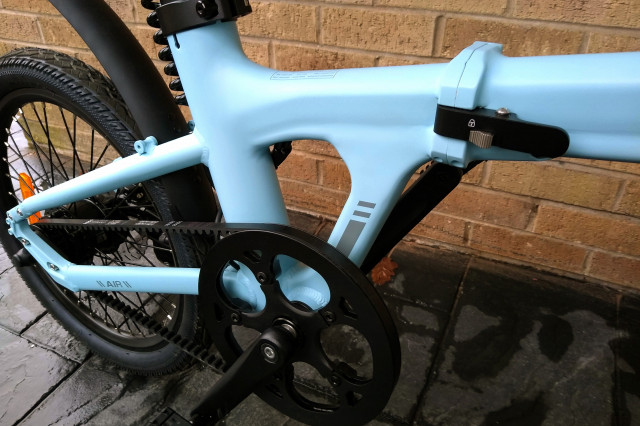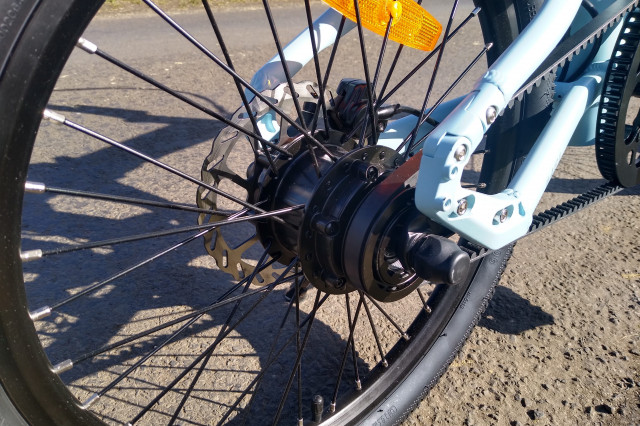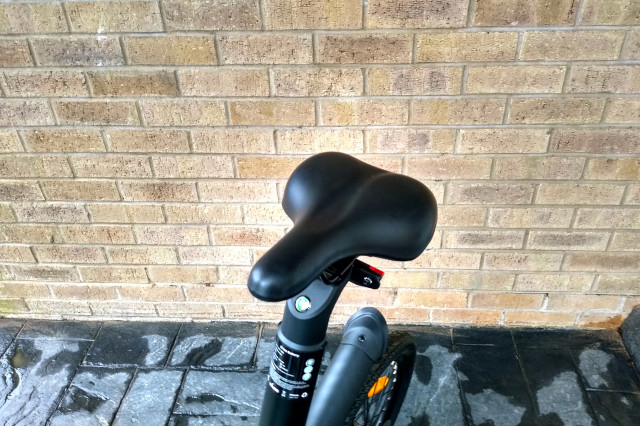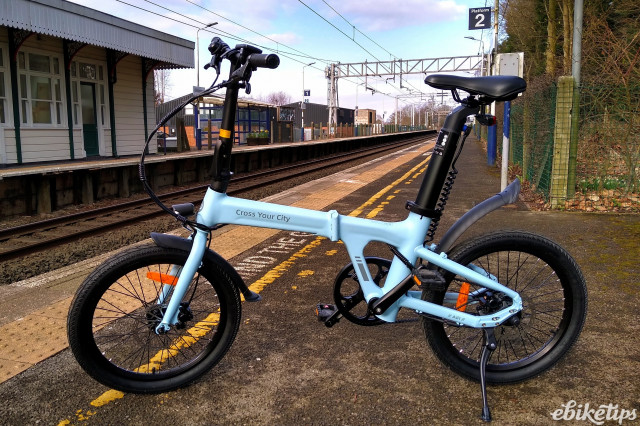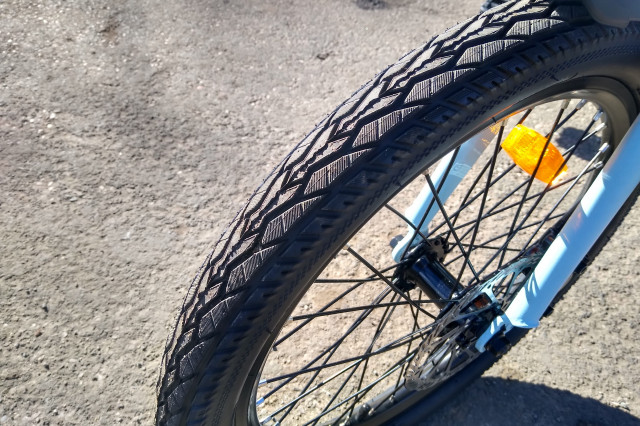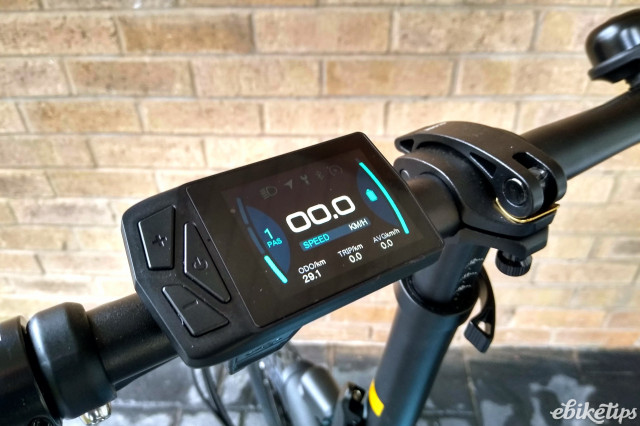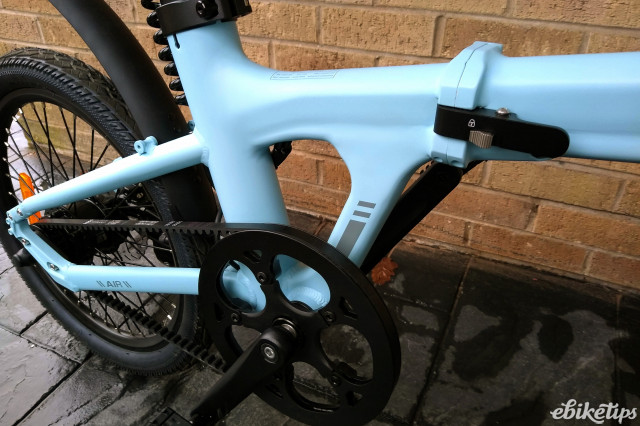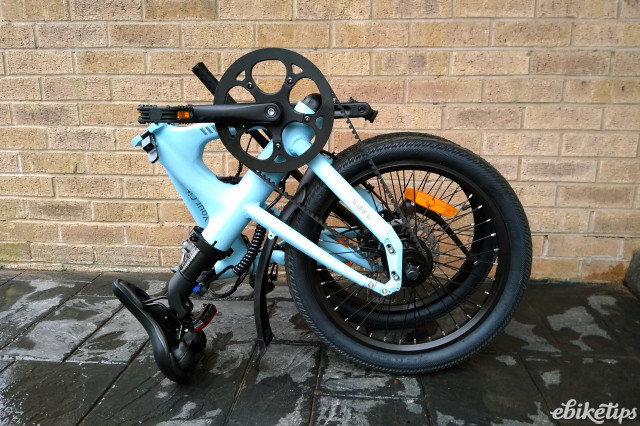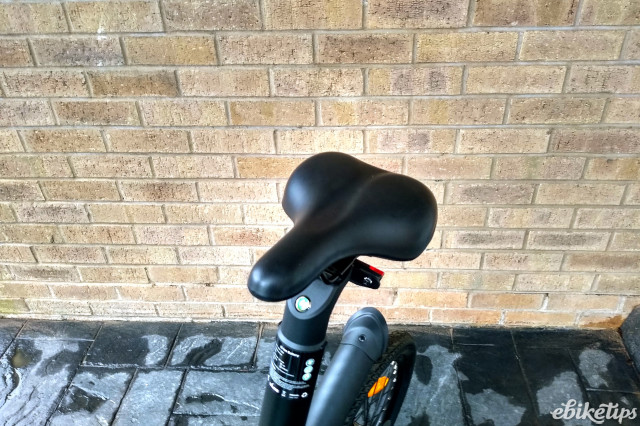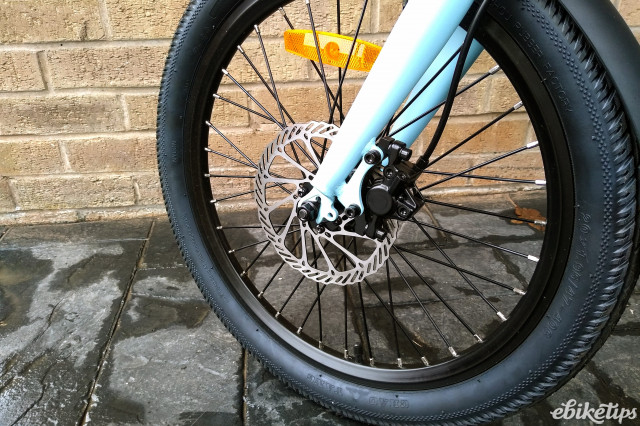Ado Air 20
Overview
- Belt drive
- Rapid fold
- Smooth power assistance
- Not great uphill
- Taller riders may find saddle low
The ADO Air 20 is a lightweight single-speed folding e-bike with a belt drive. Having given it a good ride around, we’re sure it’ll be a fantastic bike for some people. The only question is whether you are one of those people.
ADO (A Dece Oasis, which means Oasis in the Desert) are a Chinese e-bike brand. They’re primarily focused on urban folders, although they do offer a larger hybrid model as well.
The ADO Air 20 is the product of a recent Indiegogo campaign which raised half a million pounds. Deliveries of the bike are now underway with the first batch going to campaign backers.
The bike
The ADO Air 20 is the latest in a growing line of folding e-bikes where the battery doubles up as the seat post. It is driven along by a rear hub motor which is triggered by a torque sensor.
Its unique selling point over similar bikes is that it is a single-speed with a carbon belt drive instead of a chain.
This is, to my mind, a pretty good option for an urban e-bike where the contribution of the motor will often negate the need to change down a gear. This kind of setup means no faffing around with gears, no lubricating your chain, and when it needs a wash, you can pretty much just slosh a bucket of water over the drivetrain and the job’s as good as done.
That’ll be a pretty appealing package for a lot of people.
Other than that, you get hydraulic disc brakes, front and rear lights and a nice IPS screen, which proved easy-to-read in all conditions. This gives you your speed, assistance level and all the usual stuff – although a minor gripe is that the odometer came to a standstill once it hit 99.9km.
Alternatively, you can get all the same information and more via the Ado Smart App and the bike comes with an optional mount so that you can use your phone as a handlebar display if you want. (I didn’t.)
The Air 20 folds in half for carrying, sticking in a car boot, or general storage – and the fold itself is dead easy. There’s a mechanism with a safety catch to pop open the central hinge and you then fold down the handlebars and either drop or remove the saddle. The whole process only takes a few seconds.
Folding results in a package 850mm x 700mm x 450mm which is pretty much in line with similar 20-inch wheel folders like the Raleigh Stow-E-Way and Eovolt Afternoon.
One issue I had was that with nothing to secure the folded bundle, the wheels of my test bike had a tendency to roam about a bit. ADO have since decided to add magnets to counter this, but obviously I can’t vouch for how well these work.
I also wasn’t quite sure how I was supposed to stand the bike once it was folded. Wheels and saddle seemed to work best, but clearly you couldn’t do that if you removed the latter.
Speaking of which, on the ADO website the Air 20 is first listed as being 16kg and then, a bit further down, as 16-18kg. The ebiketips scales said 18.5kg, but removing the saddle/battery brought that down under 16kg. That obviously doesn’t change the overall weight, but it does make the bike that bit more manoeuvrable when you’re hauling it about by hand.
Even with the battery in, that’s not a bad weight at all. It may sound a lot, but if you’re after a lighter e-folder, you’re most likely looking at one with 16-inch wheels.
My test bike also came with peculiar optional mudguards that didn’t look too promising. In the interests of thorough testing, I put them on and rode around in the rain and duly discovered that the rear one in particular had indeed been designed by someone who was not prioritising guarding me from mud.
ADO now offer multiple mudguard options as extras, at least one of which looks a good deal more functional.
The ride
Get in the saddle and there is much to enjoy about the ADO Air 20, albeit with a couple of potentially major provisos.
For the most part I found it very easy to get along with. The power assistance comes in and out very smoothly thanks to the torque sensor and while different riders favour different cadences, the choice of gearing felt about right to me for this kind of bike. You don’t want to be pedalling too frenetically near the 25km/h assistance cut-out limit where you’ll be spending most of your riding time, but you do need a gear you can easily turn over when setting off or when riding at slightly slower speeds.
The three assistance levels are nicely calibrated too. The manual suggests they cut out at different speeds, but I didn’t find that to be the case. Even in level one, the motor contributed all the way up to 25km/h – it just wasn’t doing quite as much as in either of the two higher levels. Here at ebiketips we tend to think that’s a better way of setting up an e-bike than having lower assistance levels that are only there for riding at 15km/h or whatever.
The Air is however unquestionably built for flat terrain. In a sense that’s fair enough in that it’s clearly being sold as a city bike. But you know what? Some cities have hills in them. Some have very big hills. The Air’s greatest failing is that hills don’t even need to be particularly big to get the better of it.
The exact threshold will pan out differently depending on how heavy you are and how much effort you’re willing to put in. I’m probably just over 80kg in the winter clothing I was wearing during most of the testing period and I found it struggled with some pretty unremarkable gradients.
The bike was okay on a false flat or a shallow slope, but proved a bit of a let-down when I needed assistance the most. As a rule of thumb, it fared well when its motor and my legs could together keep the pace above 20km/h, but on steeper climbs its contribution receded into imperceptibility the more my pace slowed.
I’m not talking Alpine passes or vertiginous Peak District back roads here. Even on a 500m long climb that averaged 3% I could easily notice the difference on the steeper stretches.
Okay, it’s not a mid-motor e-MTB, it’s a single-speed city bike – but heavier riders in particular might find they’re applying the label ‘challenging’ to rather more terrain than they anticipated.
Similarly, I am 185cm and had the seat post at its limit despite the bike being billed as for riders 150-200cm. It was comfortable enough, but in an ideal world I’d have set it higher still. I’m long in the leg for my height though, so you may well be okay if you’re a similar height or even a smidge taller.
The ADO website also suggests the Air’s 345Wh battery will offer 100km range. I'll tell you right now, you won't be getting that. Not even close.
You can see from this video that ADO's lab test involved running the bike at 25km/h and having it repeatedly bounce over a small metal block to simulate 'actual road conditions'. They also reckon they replicated these results in real-life tests.
I don’t know what kind of wind-free billiard table environment they found to conduct those real-life tests, but my first charge saw me cover 27km with just 150m of climbing. Second time around, I managed 30km with the same amount of height gain.
Those tests took in a couple of short slopes where the motor noticeably laboured. Steering clear of anything remotely steep and sticking to the lowest assistance level virtually the entire time, I managed 45km before I needed to recharge – again with just 150m of climbing.
If you’re a lighter rider, you’ll get more out of it and you could add a chunk to that in warmer weather as well, but it’s hard to envisage anyone getting close to 100km. (See our guide to e-bike range for a more detailed explanation of all of this.)
That said, this isn’t necessarily poor. In fact given the bike clearly isn’t made for long, leisurely jaunts through the countryside, the range seems perfectly adequate. Indeed a large proportion of folding e-bikes will have smaller batteries.
Value
The ADO Air 20 is currently listed for sale at £1,299, which ain’t too bad if you don’t need anything more from an e-bike.
It’s significantly less than the similar-looking Eovolt Afternoon for example (£2,199) – although that one’s a 7-speed and comes with a rack.
Mycle’s 7-speed Compact Plus is £1,199 with front suspension and a rack – although those do bring the weight up to 24kg. There’s also a standard version of that bike with no suspension and a 230Wh battery which costs £999.
The Raleigh Stow-E-Way is also £999 and not massively heavier at 20kg. However, it only has a 245Wh battery.
If you’re after a single-speed, the MiRider One could be worth a look, but it’s a few hundred quid more expensive at £1,595 and has a 252Wh battery.
Despite its limitations, the ADO Air 20 certainly seems to have a niche here. It offers decent value and should prove a nice, useful, low maintenance folder for the right person.
